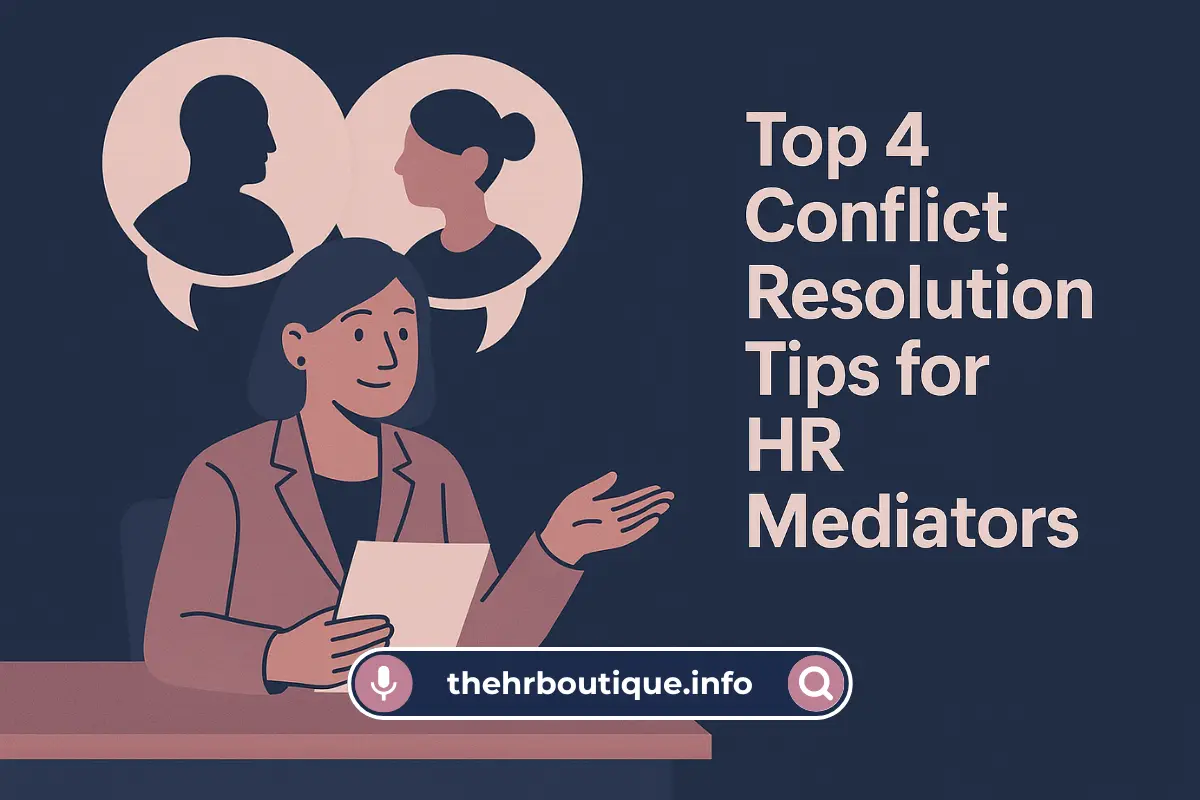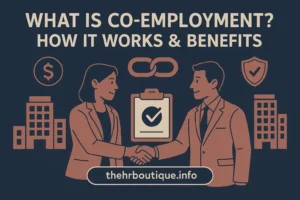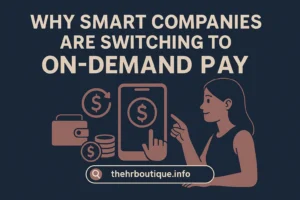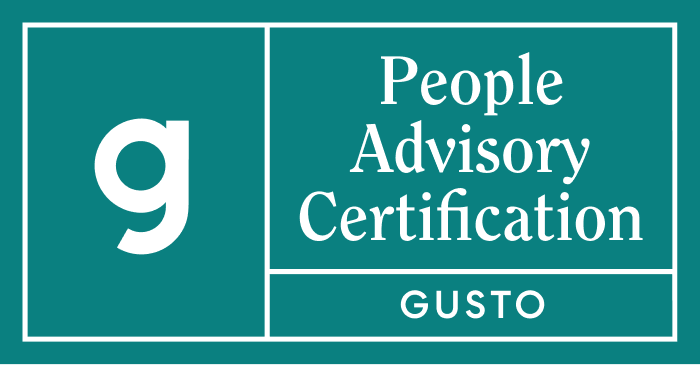Let’s be honest—workplace conflict is exhausting. As an HR professional, you’ve probably found yourself playing referee more times than you’d like. Two employees are at each other’s throats over a project. A manager and their direct report are locked in a power struggle. There is a quiet but deadly tension between coworkers who haven’t spoken in weeks.
You know what happens when these conflicts fester. Productivity tanks. Good employees quit. The office vibe turns toxic. And suddenly, you’re not just handling HR—you’re putting out fires all day.
But here’s the good news: conflict doesn’t have to be destructive. When handled right, it can actually lead to better ideas, stronger teams, and a healthier workplace. The key? Using the right mediation techniques—not just textbook theories, but real, practical strategies that actually work.
I’ve spent years mediating workplace disputes, and I’ve learned that resolving conflict isn’t about being the “office therapist” or handing down judgments. It’s about guiding people to solutions they can live with. Below, I’m sharing the most effective techniques I’ve used—methods that have turned screaming matches into productive discussions and grudges into professional respect.
Why Most HR Mediation Fails (And How to Do It Right)?
Before we get into the techniques, let’s talk about why so many workplace conflicts don’t get resolved properly.
Ever sat in a mediation where:
- One person dominates the conversation while the other clams up?
- Both sides just rehash the same complaints without moving forward?
- The “solution” is a forced apology that nobody really means?
That’s because traditional mediation often focuses on the surface-level argument (“Who said what?”) instead of the real issue (“Why did this blow up in the first place?”).
Effective conflict resolution isn’t about assigning blame—it’s about uncovering the root of the problem and helping people find a way forward. Here’s how to do it.
Technique #1: Shut Up and Listen (Seriously.)
I’ll admit it—early in my HR career, I thought mediation meant doing a lot of talking. I’d jump in with solutions, give advice, even lecture employees on professionalism. And guess what? It never worked.
Then I realized: People don’t need you to fix their problems. They need to feel heard.
How to Listen Like a Pro Mediator?
- Let them vent (within reason). Don’t cut them off with “Let’s stay positive!” Sometimes, people need to get their frustration out before they can think clearly.
- Repeat back what you hear, without judgment. Try: “So what I’m hearing is that when the deadline moved up without warning, you felt blindsided. Is that right?”
- Watch for nonverbal cues. Crossed arms, eye rolls, nervous tapping—these tell you more than words alone.
- Dig deeper with open-ended questions:
- “What’s the hardest part of this situation for you?”
- “If this conflict were resolved, what would that look like?”
When people feel truly listened to, they stop fighting to be heard and start working on solutions.
Technique #2: Find the Real Issue (Hint: It’s Usually Not What They’re Fighting About)
A classic HR scenario: Two employees are at war over a missed deadline. You mediate, they agree to better communication, and… two weeks later, they’re back at it.
Why? Because the deadline was just the trigger, not the real problem. Maybe one employee feels micromanaged. Maybe the other thinks their effort isn’t recognized.
How to Uncover Hidden Conflicts?
- Ask about patterns: “Has something like this happened before?”
- Look for emotional cues: If someone’s unusually angry about a small issue, there’s probably more to it.
- Separate the person from the problem: Instead of “You’re so disorganized!” reframe it as “How can we streamline the process so deadlines aren’t missed?”
One of my biggest mediation wins was resolving a feud between a sales rep and a marketing manager. On the surface, they were fighting about a botched campaign. After digging deeper? The sales rep felt marketing never listened to customer feedback. The marketing manager felt sales didn’t appreciate their creative work. Once those real issues were out in the open, we could fix the actual problem.
Technique #3: Ditch the “Compromise” Trap
Here’s a mediation myth: The best solution is always a 50/50 compromise.
But think about it—if two coworkers are fighting over a promotion, “You each get half the job” doesn’t work. If one employee wants remote work and the other insists on in-office collaboration, “Come in 2.5 days a week” might just make everyone miserable.
Instead of forcing a lukewarm middle ground, look for win-win solutions where both sides get something they truly value.
How to Find Creative Solutions?
- Identify their core needs: Ask “What’s most important to you here?” (e.g., flexibility vs. face-to-face teamwork).
- Brainstorm options together: Sometimes, the best ideas come from the employees themselves once they stop fighting.
- Test-drive solutions: “Let’s try this for a month and check back in.”
Example: Two team leaders were clashing over budget allocations. Instead of splitting the money, we discovered one cared more about staffing while the other prioritized tools. They each got what they needed most, without a bitter compromise.
Technique #4: When All Else Fails, Change the Structure
Some conflicts keep happening because the system is broken. No amount of mediation will fix:
- Unclear job responsibilities.
- A toxic manager who pits employees against each other.
- A bonus structure that rewards cutthroat competition.
As HR, sometimes your job isn’t just to mediate—it’s to change the rules of the game.
When to Intervene Structurally?
- The same conflict keeps recurring with different people.
- Employees hint at unfair policies (“Well, if the process weren’t so…”).
- You notice power imbalances (e.g., one department always “wins”).
I once worked at a company where interdepartmental conflicts were constant. After three mediations, I realized the real issue: Sales and Operations were measured on completely opposing metrics (revenue vs. cost-cutting). Until leadership aligned those goals, no mediation would stick.
The One Thing You Should Never Do in Mediation
I’ll keep this short because it’s crucial:
Never, ever take sides—even silently.
Even a subtle sigh, eye roll, or “Well, actually…” can destroy trust. Employees will sniff out bias instantly, and your credibility as a mediator is gone.
If you genuinely can’t stay neutral (maybe one employee is your cousin’s best friend), pass the case to someone else.
Final Thought:
Early in my career, I saw workplace conflict as a failure—something to squash immediately. Now? I welcome it (within reason). Because when people care enough to disagree—and learn to work through it—that’s where innovation happens.
Your job as an HR mediator isn’t to create a conflict-free workplace. It’s to create a workplace where conflict leads somewhere better.
So the next time you get called into another “he said/she said” drama, take a deep breath. You’re not just stopping a fight—you’re helping build a stronger team.
Over to You: What’s the toughest conflict you’ve mediated? Did you discover any surprising solutions? Drop your stories below—I’d love to hear what’s worked (or crashed and burned) in your experience.
And if you found this helpful, share it with that one HR colleague who’s always stuck playing referee. They’ll thank you.





